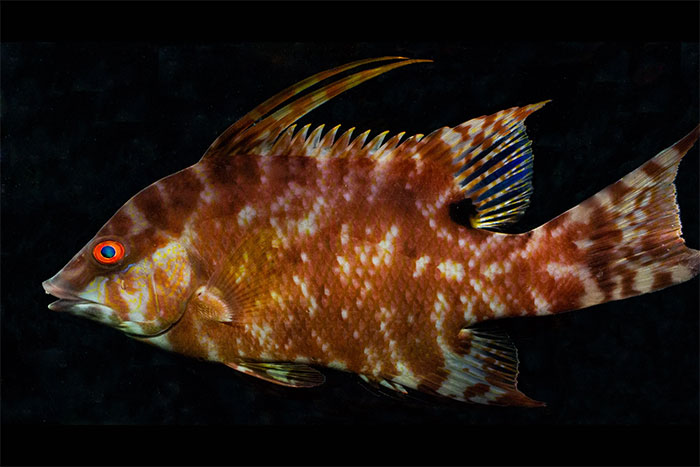A breakthrough in research at UNCW (University of North Carolina, Wilmington, USA) and the Marine Science Center shows that some fish species change color “visible” by their skin.
New research reveals that reef-dwelling pig snout fish (Lachnolaimus maximus) change their skin color based on the environment in which they swim, sensing their surroundings using special light-sensing cells on the skin “even after they die”.

Research published in the journal Nature this week advances our understanding of the behavior and evolution of these fish, and how some animals are able to track changes in their own skin color. them and quickly adapt.

Pig snout fish, a common fish species in the Atlantic Ocean. (Photo: Uncw.edu).
“They seemed to be observing their own color changes,” said study co-author Lori Schweikert.
Sonke Johnsen, another author of the study, explains: “In a way, this animal can know what its skin looks like, even though it cannot physically ‘bend down’ to see what its skin looks like.” how”.
Researchers, including those from UNCW, say the creatures have very useful traits that can easily adapt to changes in environmental temperature, attract mates and camouflage.
Cells in their bodies called chromatophores – containing pigments, crystals or tiny reflective sheets – allow these animals to change color rapidly within minutes or less.
Pig snout fish specifically change color to camouflage and escape predators or to signal to other species.

Pig snout fish change color to camouflage and escape predators or to signal to other species
The pig snout (maximum length 91cm and weight about 11kg) is common in the Western Atlantic Ocean from North Carolina (USA) to Brazil and is known for its skin changing color. It is famous for being able to transform from white to mottled to reddish brown in just milliseconds to “blend in” with coral, sand or rocks.
They do this by moving pigment around the body’s pigment cells to expose or cover the white tissue underneath. However, it remains unclear how the snapdragon adjusts and perceives these color changes.
Disguise even when dead
What especially surprised scientists in the study was that the pig snout continued to camouflage itself even when it was no longer alive.
In the new study, they used a microscope to examine pig snout skin in detail by measuring the effects of light on different parts of the fish. They discovered that photoreceptors, called SWS1 , located underneath melanocytes may be involved in this process.

Pig snout fish often live near coral reefs. (Photo: Albert Kok).
They said these cells are sensitive to light through the colors expressed by the chromatophores, especially the wavelengths of light found in their coral reef habitat.
According to scientists, these receptors provide feedback to fish about where and how color changes occur in different parts of their skin.
“By examining the morphology, physiology, and optics of cutaneous photoreception in the snapdragon fish, we describe a cellular mechanism by which pigments function,” the scientists said. pigmentation (i.e. dispersion and aggregation) alters the light transmitted through SWS1 receptors in the skin”.
This feature allows reef-dwelling snouts to monitor chromatophores and sense information about their own color change performance.
Experts say that studying systems like this in fish could provide important information with practical applications for humans.
- The tragedy of a killer whale that was held in captivity for more than half a century, died shortly before being released
- Buying snails to drink, the man suddenly changed his life thanks to picking up a strange orange object
- The US released shocking photos of the world 13.4 billion years ago





